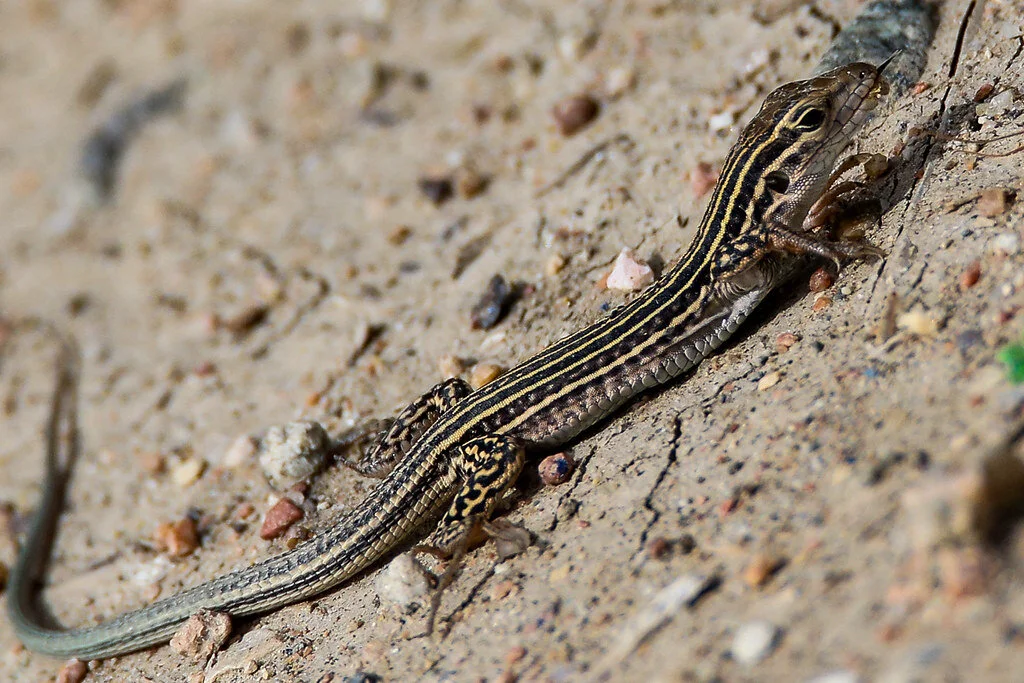Whiptail lizard
Checkered Whiptail Lizard
One of our very rare partners on the ranch has figured out the path to evolutionary success in a stable cooperative world - do away with males. Yes, the Colorado Checkered Whiptail Lizard is a female only species. They are Triploid, that is 3 chromosomes, 2 X’s and a Y but the Y is inactive. Reproduction is asexual, egg cells develop without fertilization by a male gamete. Offspring are all female clones of their mother with two X chromosomes active.
This evolutionary strategy has an exponential advantage for species reproduction. Under the sexual reproduction system, males waste resources just to contribute a Y chromosome to reproduction. Under the whiptail system, every member of the species produces offspring. When you think in multiple generations the increased number of offspring is exponential.
Besides wasting resources, a number of historians and some evolutionary biologists have argued that the male ego drives much, if not all, human conflict. Experiments with Whiptales support this contention. Under controlled experimental conditions all female Checkered Whiptails shared burrows more often and showed much less aggressive interaction than Whiptail species that included males (Leuck, 1982, 1985).
Turns out that males are only really useful when environments are changing and unstable. Sexual reproduction with recombination of an X and Y chromosome creates genetically unique offspring so a species can better adapt to unstable environments. Perhaps the male ego is a kind of selfish gene that keeps the world in turmoil to keep itself relevant?
Lueck, B.E. 1982. Comparative burrow use and activity patterns of parthenogenetic and bisexual whiptail lizards (Cnemidophorus: Teiidae). Copeia 1982: 416-424.
Lueck B.E. 1985. Comparative social behavior bisexual and unisexual whiptail lizards (Cnemidophorus). J. Herpetol. 19: 492-506.

